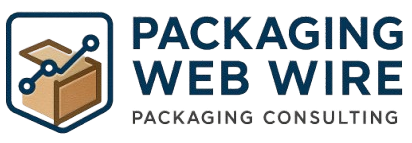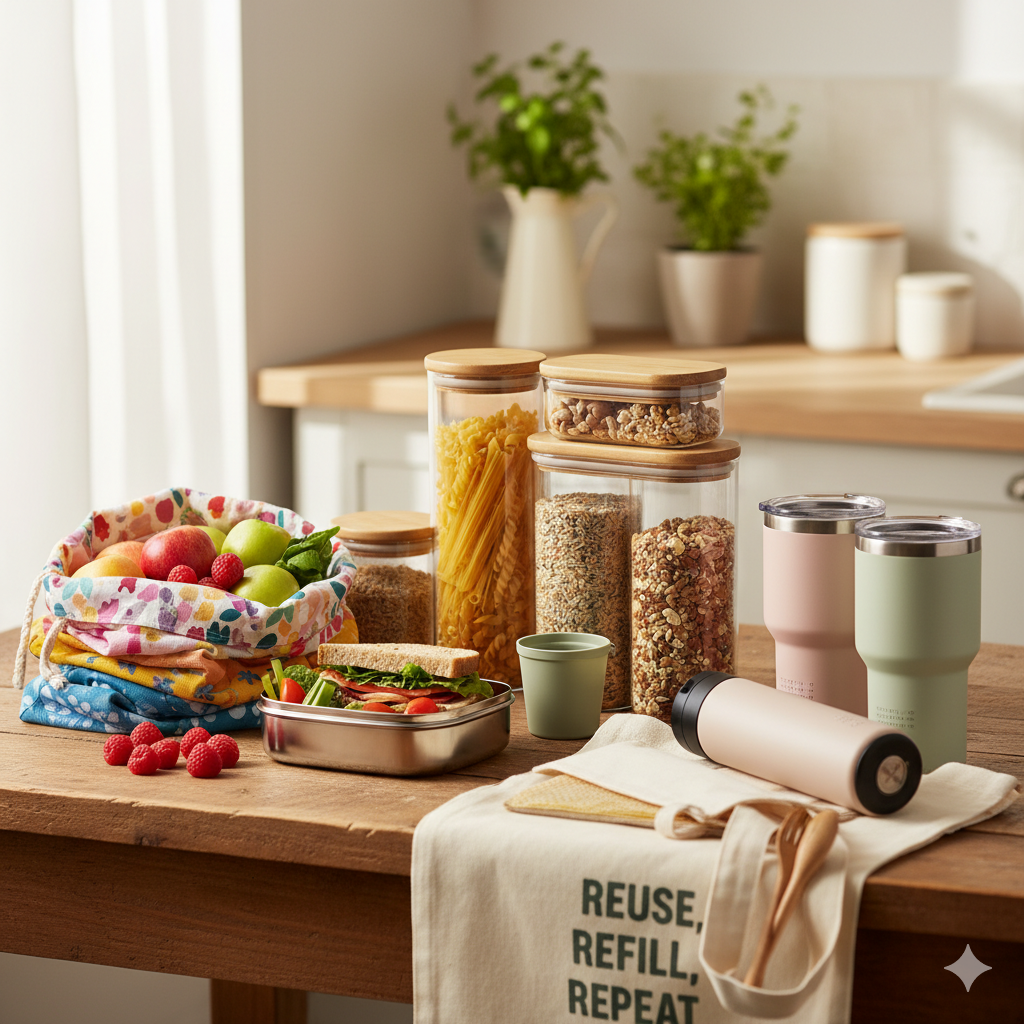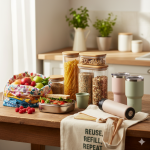The global reusable packaging market is undergoing a significant transformation, driven by sustainability goals, regulatory pressures, and innovations in packaging design and material science. Valued at USD 126.51 billion in 2024, the market is projected to grow to USD 220.23 billion by 2034, expanding at a CAGR of 5.7% during the forecast period from 2025 to 2034.
This growth is largely attributed to the expansion of e-commerce and urban delivery services, which are increasing the demand for durable, returnable, and cost-efficient transport solutions. Additionally, the global shift toward circular economy models and stringent regulations on single-use plastics have positioned reusable packaging as a sustainable alternative in the global supply chain.
Download a Sample of Our Market Intelligence: https://www.towardspackaging.com/download-sample/5052
Reusable packaging, often made from plastic, metal, wood, or glass, includes pallets, bins, containers, drums, and reusable plastic crates. These products are specifically designed for multiple reuse cycles, efficient return logistics, and reduced environmental impact. The key objective is to minimize waste, optimize resource use, and enhance supply chain efficiency.
Market Dynamics
Key Driver: Expansion of Urban and E-commerce Delivery Models
The rapid growth of e-commerce and last-mile delivery has become a cornerstone of the reusable packaging market. With online retailers like Amazon, Walmart, Alibaba, and Flipkart investing heavily in logistics, the need for robust reusable shipping containers is escalating.
According to data from the National E-commerce Associations (2025), leaders in the sector collectively spent USD 3.5 billion on advertising in 2024, showcasing the market’s digital acceleration. As urbanization expands, reusable systems are becoming central to sustainability and branding efforts for logistics and retail sectors alike.
Key Restraint: High Initial Investment and Limited Infrastructure
While reusable packaging delivers long-term cost savings, the high upfront costs of material, cleaning infrastructure, and reverse logistics create entry barriers. Many small and medium-sized enterprises (SMEs) find the setup financially challenging compared to cheaper single-use options.
Moreover, lack of standardized return systems and limited regional infrastructure for cleaning, repairing, and redistributing reusable packaging hinder its scalability in developing markets.
Market Opportunity: Growth of Circular Economy Models
The transition to a circular economy offers vast opportunities for reusable packaging providers. Global corporations are redesigning their supply chains to emphasize reuse, refill, and recycling. The development of lightweight and modular materials is enhancing packaging lifespan and functionality.
Companies are also investing in digital tracking systems using IoT, RFID, and AI-driven logistics to optimize the lifecycle of reusable products, aligning economic and environmental objectives.
Invest in Our Premium Strategic Solution: https://www.towardspackaging.com/checkout/5052
Market Insights
Technological Transformation and AI Adoption
Artificial Intelligence (AI) is revolutionizing packaging systems through automation, predictive maintenance, and sustainability analytics. AI algorithms help in:
-
Optimizing material selection for minimal waste
-
Designing lighter yet durable structures
-
Predicting reuse cycles for cost efficiency
-
Enhancing logistics through smart sensors and real-time tracking
AI-powered tools assist in determining the most eco-friendly materials, improving supply chain transparency, and reducing carbon footprints, transforming reusable packaging into an intelligent and adaptive ecosystem.
Industry Trends
-
Expansion of Circular Economy Models
Companies are integrating closed-loop systems that promote cleaning, collection, refilling, and reuse, creating long-term operational efficiency. -
Rise of Tech-Enabled Tracking Systems
Implementation of QR codes, IoT sensors, and RFID tags enhances tracking, return rates, and lifecycle transparency. -
Growth of Return and Refill Stations
Supermarkets, beauty brands, and restaurants are launching refill and return programs to reduce packaging waste. -
Premiumization of Reusable Packaging
Reusable packaging is evolving into a luxury segment with aesthetic designs and premium materials like glass, bamboo, and stainless steel, enhancing brand appeal.
Market Segments
By Material
Plastic remains the dominant material in 2024 and continues to lead through the forecast period.
-
Durability: Resistant to impact, moisture, and chemicals.
-
Cost Efficiency: Lightweight and suitable for logistics optimization.
-
Integration: Easily compatible with sensors and tracking technologies.
Other key materials include metal, wood, glass, and composites, each chosen based on the product’s lifecycle requirements and sustainability goals.
By Product Type
-
Containers:
The container segment leads the market, favored for its reusability, ease of cleaning, and long lifespan. They support stackability, space efficiency, and reduced handling time. -
Crates and Pallets:
Essential for food logistics and industrial transport, offering high load-bearing capacity. -
Bottles and Drums:
Widely adopted in beverage, chemical, and pharmaceutical industries. -
Others:
Includes barrels, bins, and trays used across diverse sectors.
By End-Use Industry
-
Food and Beverage:
The leading segment, driven by high turnover rates in supply chains, hygiene standards, and sustainability demands. -
Automotive:
Reusable packaging for parts logistics improves safety and reduces waste. -
Healthcare:
Sterile, durable containers are essential for transporting medical instruments and devices. -
Logistics and Transportation:
Rapidly growing as reusable packaging integrates into returnable transport systems.
By Region
-
North America: Dominated the global market in 2024.
-
Asia Pacific: Expected to witness the fastest growth through 2034.
-
Europe: Poised for steady growth due to strict environmental policies.
-
Latin America & MEA: Emerging adoption due to increasing sustainability awareness.
Regional Insights
North America: The Dominant Market
North America accounted for the largest share in 2024, driven by a robust logistics infrastructure, food and beverage industry expansion, and increasing ESG compliance among corporations.
The U.S. and Canada have strong networks of pool operators such as CHEP USA, IFCO Systems, and Tosca, ensuring widespread reusable packaging adoption. Regulatory initiatives such as zero-waste programs and state bans on single-use plastics further accelerate growth.
Europe: Strong Policy Support and Consumer Awareness
Europe continues to lead in sustainability legislation with frameworks such as the European Green Deal and Circular Economy Action Plan.
Countries like Germany, France, and the U.K. have implemented strict bans on single-use plastics since 2021. European consumers’ eco-conscious behavior drives premiumization and high adoption rates of reusable systems. Major logistics providers like Euro Pool System and CHEP Europe are at the forefront of circular packaging operations.
Asia Pacific: The Fastest-Growing Market
The Asia Pacific region is anticipated to grow at the highest CAGR during the forecast period.
Countries such as China, India, Japan, and South Korea are investing in sustainable manufacturing and logistics. The region benefits from cost-effective production, rapid industrialization, and government initiatives promoting waste reduction.
India’s ban on single-use plastics (2022) and programs like the Swachh Bharat Mission have boosted demand for reusable packaging in e-commerce, manufacturing, and retail.
Latin America and MEA: Emerging Opportunities
Regions such as Brazil, Mexico, South Africa, and the UAE are adopting reusable packaging solutions across retail and logistics sectors. With growing investments in industrial infrastructure and sustainable manufacturing, these markets present long-term potential.
Competitive Landscape: Top Companies in the Reusable Packaging Market
1. Schoeller Allibert
About: A leading European manufacturer specializing in plastic reusable packaging solutions.
Products: Containers, foldable crates, intermediate bulk containers, and pallets for automotive, agriculture, and retail industries.
Market Cap: Estimated at USD 1.4 billion (2025).
2. ORBIS Corporation
About: A U.S.-based leader in reusable plastic packaging, part of Menasha Corporation.
Products: Reusable totes, bulk containers, pallets, and racks for supply chain management.
Market Cap: Approx. USD 2.1 billion.
3. Mauser Packaging Solutions
About: Known for its integrated network of packaging products and services for industrial use.
Products: Intermediate bulk containers (IBCs), plastic drums, steel drums, and reconditioning services.
Market Cap: Estimated at USD 1.9 billion.
4. Smurfit Kappa
About: A global leader in paper-based and fiber packaging solutions headquartered in Ireland.
Products: Eco-friendly corrugated containers and circular packaging innovations.
Market Cap: Over USD 13 billion.
5. Polymer Logistics
About: Specializes in reusable transport packaging solutions with a strong presence in food and retail supply chains.
Products: RPCs, pallets, and display-ready containers.
Market Cap: Around USD 750 million.
6. Reusable Packaging Group
About: Focuses on closed-loop packaging solutions with digital integration for traceability.
Products: Custom reusable containers, crates, and bins.
Market Cap: USD 600 million.
7. SSI Schaefer
About: German logistics and packaging systems provider focusing on material handling and storage solutions.
Products: Returnable transport packaging, bins, and automation systems.
Market Cap: USD 2.5 billion.
8. Schutz
About: A German manufacturer specializing in industrial packaging and bulk containers.
Products: IBCs, plastic and steel drums, and reconditioning systems.
Market Cap: Approx. USD 1.8 billion.
9. Tri-Wall
About: Offers industrial packaging and logistics support, especially in Asia and Europe.
Products: Heavy-duty corrugated packaging for manufacturing and automotive sectors.
Market Cap: USD 1.1 billion.
10. RPP Containers
About: North American supplier of reusable plastic packaging.
Products: Bulk bins, pallets, containers, and material handling equipment.
Market Cap: USD 400 million.
Recent Developments and Announcements
-
April 2025: International Paper acquired DS Smith, introducing the GoChill Cooler, a 100% recyclable and reusable alternative to Styrofoam.
-
September 2024: ARRAY Technologies launched reusable plastic casing for solar tracker packaging, reducing cardboard waste.
-
October 2024: ProAmpac introduced ProActive Intelligence M and ProActive Sustainability portfolios focusing on smart and recyclable packaging solutions.
Market Outlook 2025–2034
The reusable packaging market will continue to expand as industries worldwide embrace sustainability. The integration of AI, smart sensors, and material innovations will redefine packaging efficiency and circularity.
By 2034, reusable systems will become standard in industries such as food & beverage, logistics, automotive, and healthcare, fostering global collaboration for a zero-waste future.
Frequently Asked Questions (FAQs)
1. What is the projected size of the reusable packaging market by 2034?
The market is expected to reach USD 220.23 billion by 2034, growing at a CAGR of 5.7% from 2025 to 2034.
2. Which region dominated the reusable packaging market in 2024?
North America held the dominant share in 2024 due to its advanced logistics infrastructure and strong sustainability regulations.
3. What are the main materials used in reusable packaging?
The primary materials include plastic, metal, wood, glass, and composites, with plastic being the most widely used for its durability and cost-effectiveness.
4. What are the key factors driving the growth of the reusable packaging market?
Growth is driven by the expansion of e-commerce, urban delivery networks, circular economy initiatives, and AI-enabled packaging solutions.
5. Which industries are the major end-users of reusable packaging?
Major end-users include food and beverages, automotive, healthcare, and logistics sectors, each leveraging reusable systems for sustainability and efficiency.
Source : https://www.towardspackaging.com/insights/reusable-packaging-market
Access our exclusive, data-rich dashboard dedicated to the respective market built specifically for decision-makers, strategists, and industry leaders. The dashboard features comprehensive statistical data, segment-wise market breakdowns, regional performance shares, detailed company profiles, annual updates, and much more. From market sizing to competitive intelligence, this powerful tool is one-stop solution to your gateway.
Access Now: https://www.towardspackaging.com/contact-us
Become a Valued Research Partner with Us – Schedule a meeting: https://www.towardspackaging.com/schedule-meeting
Request a Custom Case Study Built Around Your Goals: sales@towardspackaging.com
About Us
Towards Packaging is a global consulting and market intelligence firm specializing in strategic research across key packaging segments including sustainable, flexible, smart, biodegradable, and recycled packaging. We empower businesses with actionable insights, trend analysis, and data-driven strategies. Our experienced consultants use advanced research methodologies to help companies of all sizes navigate market shifts, identify growth opportunities, and stay competitive in the global packaging industry.
Stay Connected with Towards Packaging:
- Find us on Social Platforms: LinkedIn | Twitter | Instagram
- Subscribe to Our Newsletter: Towards Sustainable Packaging
- Visit Towards Packaging for In-depth Market Insights: Towards Packaging
- Read Our Printed Chronicle: Packaging Web Wire
- Get ahead of the trends – follow us for exclusive insights and industry updates:
Pinterest | Medium | Tumblr | Hashnode | Bloglovin | LinkedIn – Packaging Web Wire
- Contact: APAC: +91 9356 9282 04 | Europe: +44 778 256 0738 | North America: +1 8044 4193 44




